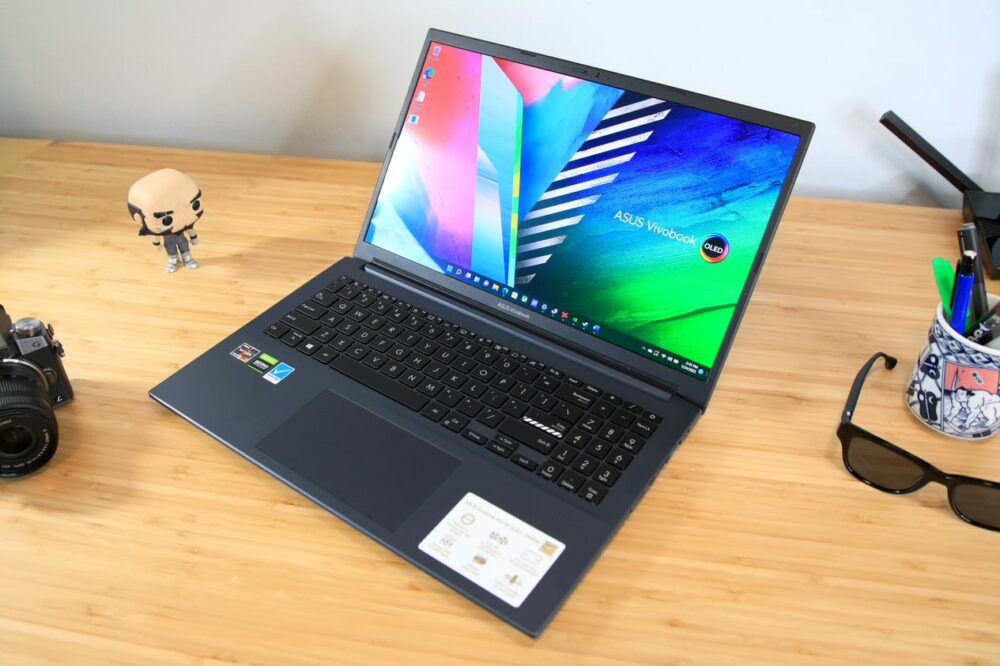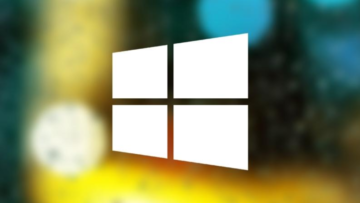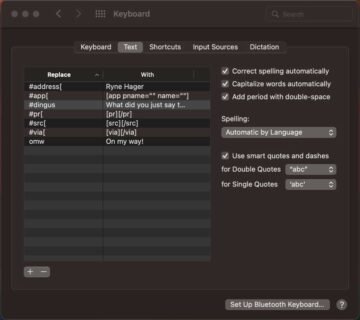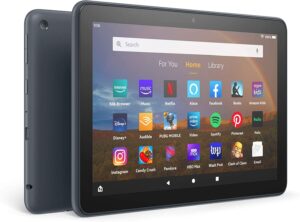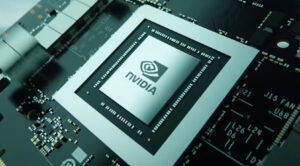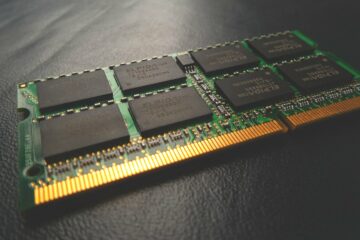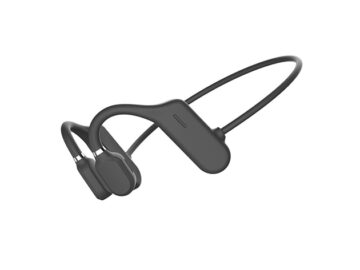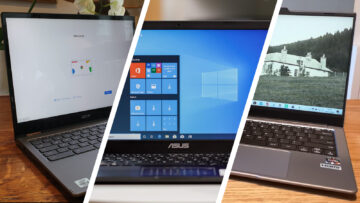Let’s face it, not all PC gaming enthusiasts have the scratch to purchase a premium gaming laptop. There’s no shame in that. Luckily, there are some great budget options out there, so gamers can get their game on without dipping into the rent money. Budget gaming laptops nowadays can sport some pretty decent CPU and GPU performance. Sure, as with any budget option, you can expect to make some compromises such as dialing back those ultra graphics settings in order to hit the 60fps sweet spot, but your experience can still be plenty satisfying.
The important thing is that you make the right compromises. We’ve compiled a list of the best gaming laptops under $1,000 to help you in that quest. (Note that laptop prices can fluctuate and there might be times when the price of one of our picks hovers over $1,000.) We’ll keep adding more budget gaming options as we find them. And in case you’re lucky enough to find some extra money under the sofa cushion, we’ve added a pick for those who can stretch their budget a little bit further.
For more recommendations on gaming laptops, see our roundup of the best gaming laptops across all prices. Additionally, before you buy, take a look at our roundup of the best laptop deals, updated weekly—it could help you save even more!
Updated 06/01/2023: We replaced our former best overall pick, the Acer Nitro 5 AN517, because it’s currently out of stock. However, we feel as though the Asus Vivobook Pro 15 makes a good replacement because of its gorgeous OLED display and surprisingly peppy performance. Read more about it below.
Asus Vivobook Pro 15 – Best overall
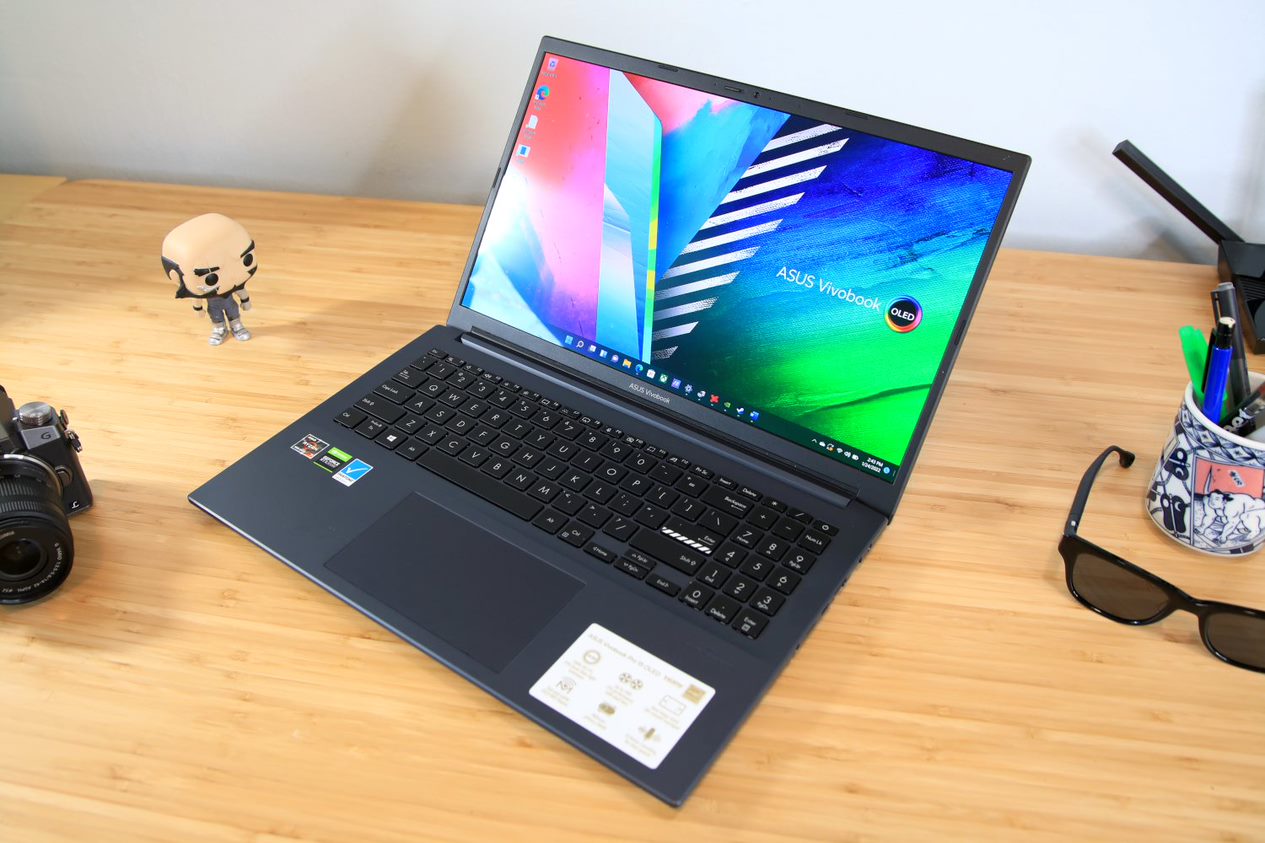
Pros
- Good productivity performance
- Superb display
- Rugged design
- Great battery life
Cons
- Boring aesthetics
- Unimpressive 720p webcam
- Unreliable fingerprint scanner
- Poor port selection
Price When Reviewed: $1099.99
The Asus Vivobook Pro 15 lives up to the “Pro” title with its outstanding price-to-performance ratio. Packed with a Ryzen 7 CPU, an RTX 3050 GPU, 16GB of RAM, and a 512GB M.2 NVMe hard drive, this laptop gives you the power and performance of higher-end alternatives for much cheaper. But the feature that makes the Vivobook Pro 15 stand out from the rest of the pack on this list is the gorgeous 15.6-inch OLED display that offers crisp visuals and a near-perfect contrast ratio.
True, its design doesn’t stand out, but that’s not what this laptop is about. Asus isn’t trying to beat premium laptops on design or build quality here. Instead, they want to load this laptop with so much power that the design doesn’t even matter—and they were successful. The Asus Vivobook Pro 15 gives you the power and features of a much more expensive midrange laptop for the price of a budget-friendly option.
Read our full ASUS VivoBook Pro 15 OLED Ultra Slim Laptop review
HP Victus 15 – Best budget option
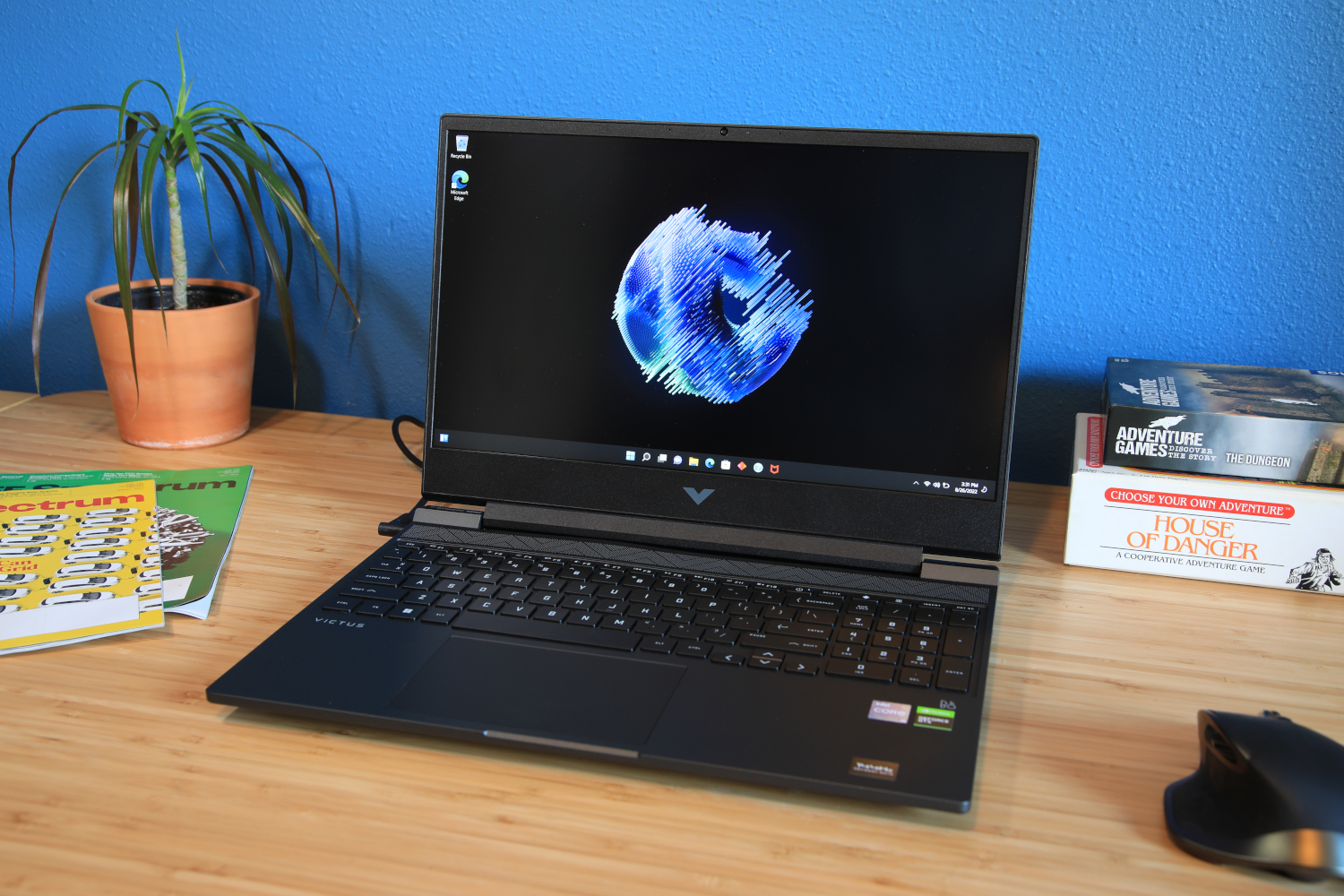
Pros
- Excellent price
- Good keyboard and touchpad
- Respectable processor performance
- Can handle most games at 30 FPS
Cons
- Generic design
- Disappointing build quality
- Unattractive 144Hz display
- 60 FPS is often out of reach
Price When Reviewed: $549.99
The HP Victus 15 might not be as powerful as some of the other options on this list, but what it lacks in performance, it makes up for by being extremely affordable. It is one of the cheapest options we’ve seen that still offers discrete graphics—albeit an older GTX 1650 model. Even though 60 frames-per-second might be out of reach on this laptop on most modern games, you can still play them at lower graphics settings. If you’re really strapped for cash but want that boost a discrete graphics card gives you, then the HP Victus 15 is worth your consideration.
Read our full HP Victus 15 review
Asus TUF Gaming A16 Advantage Edition – Best battery life
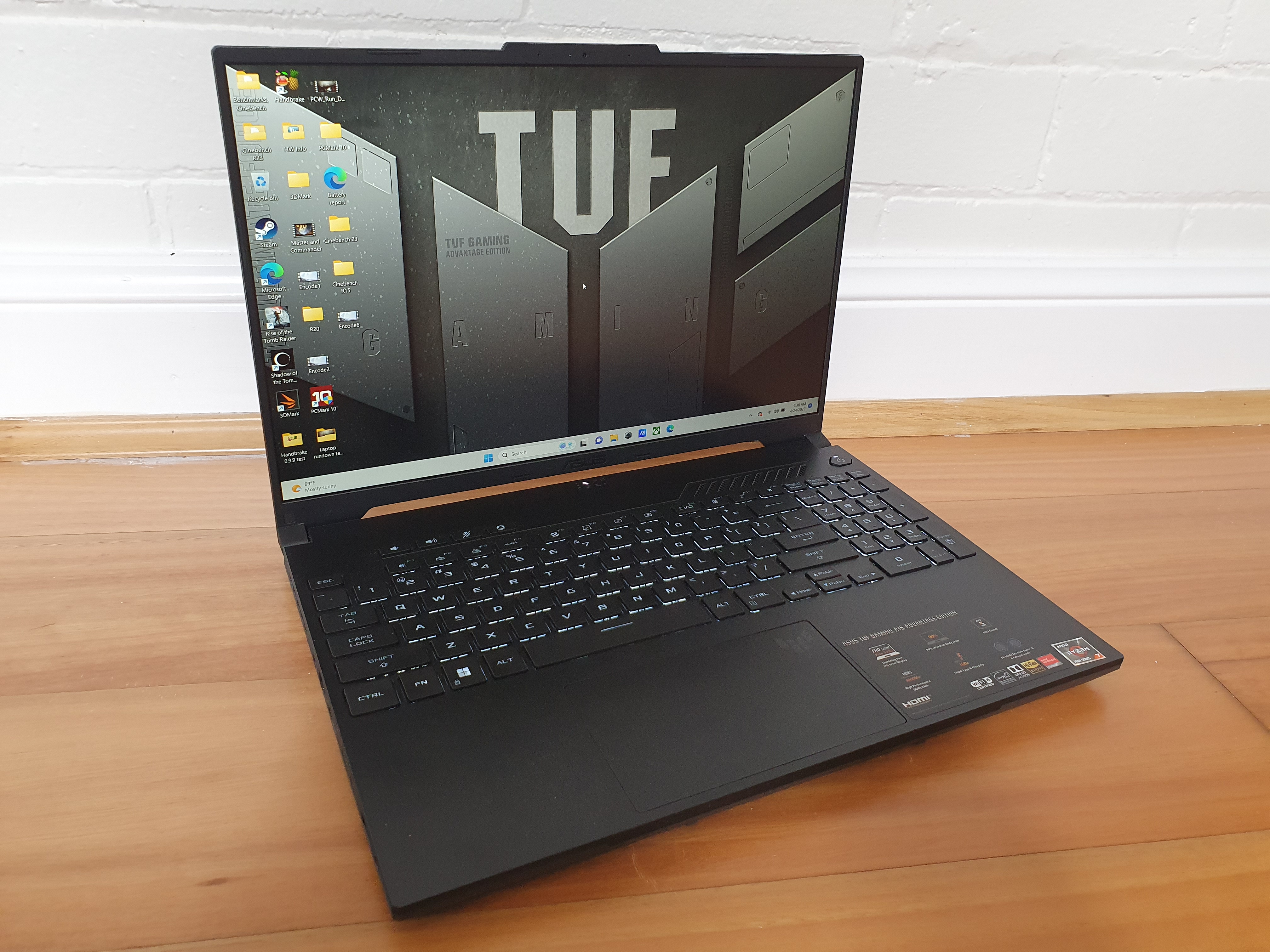
Pros
- Outstanding all day battery life
- Gorgeous and smooth FHD+ 16:10 display
- Robust chassis with US military grade certification
Cons
- Left-side port orientation won’t suit left handers
- Keys feel a bit soft and fatiguing
- The 720p HD camera isn’t the best
Price When Reviewed: $1,099
Gaming laptops aren’t known for having the best battery life and gaming while unplugged can drain your battery in the blink of an eye. This makes it difficult to game on the go without being tethered to the nearest outlet. However, that’s not the case with the Asus TUF Gaming A16 Advantage Edition. It packs a massive 90 watt-hour battery, which lasted a staggering eleven hours during our testing. Of course, intensive gaming will reduce this significantly, but you can still expect to get in the neighborhood of seven hours of continuous 1080p gaming without having to plug-into an AC outlet. That’s an amazing result considering most gaming laptops only muster between three to six hours. The robust chassis and sturdy overall design means it can also take the occasional accidental bump or knock while out and about.
It’s no slouch when it comes to performance either. It expertly handles 1080p gaming due to its combo of a Ryzen 7 processor and AMD Radeon RX 7600S graphics card. During out tests, it scored very well in our Shadow of the Tomb Raider game benchmark tests, outpacing more expensive competitors. This all combines to make the A16 an excellent option for 1080p gamers who want to enjoy untethered gaming on the go.
Read our full Asus TUF Gaming A16 Advantage Edition review
Lenovo IdeaPad 5 Gaming Chromebook – Best Chromebook for gaming
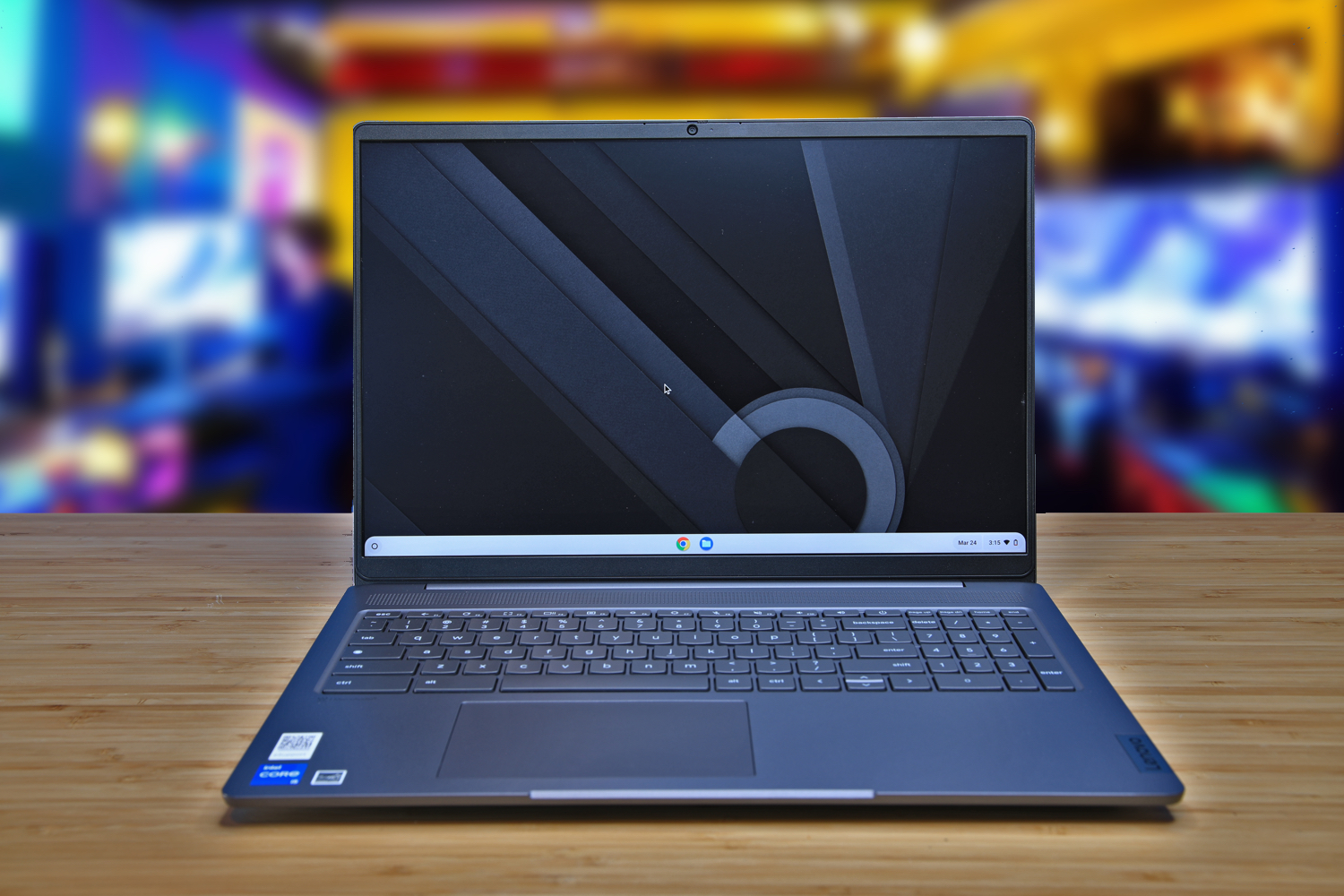
Pros
- Large, bright 2560×1600 display
- Ideal wireless and wired connectivity
- Good display, strong speakers
Cons
- Unimpressive design
- Mediocre keyboard and touchpad
- Lackluster webcam and microphone
Price When Reviewed: $569.99
You probably don’t think of Chromebooks when you consider purchasing a laptop for gaming, and we don’t blame you. But with the advent of cloud gaming services, higher-end Chromebooks can now double as gaming devices. Still, some of these Chromebooks cost more than budget Windows gaming laptops, putting them out of reach for most. Enter the Lenovo IdeaPad 5 Gaming. For less than $600 it comes loaded with a Core i5 processor, 8GB of RAM, a 256GB SSD, and a bright 16-inch 2560×1600 display.
If you have decent enough internet and are willing to pay the monthly fee for a cloud gaming service, you’re now able to stream the very best modern games straight from the cloud to your Chromebook. In our tests of the Lenovo IdeaPad 5 Gaming Chromebook, we even found that we could stream AAA games at good resolutions and up to 120Hz. See our roundup of the best cloud gaming services to learn about options.
Read our full Lenovo IdeaPad 5 Gaming Chromebook review
If you’re willing to spend a little bit more…
Dell G16 – Best for work and play
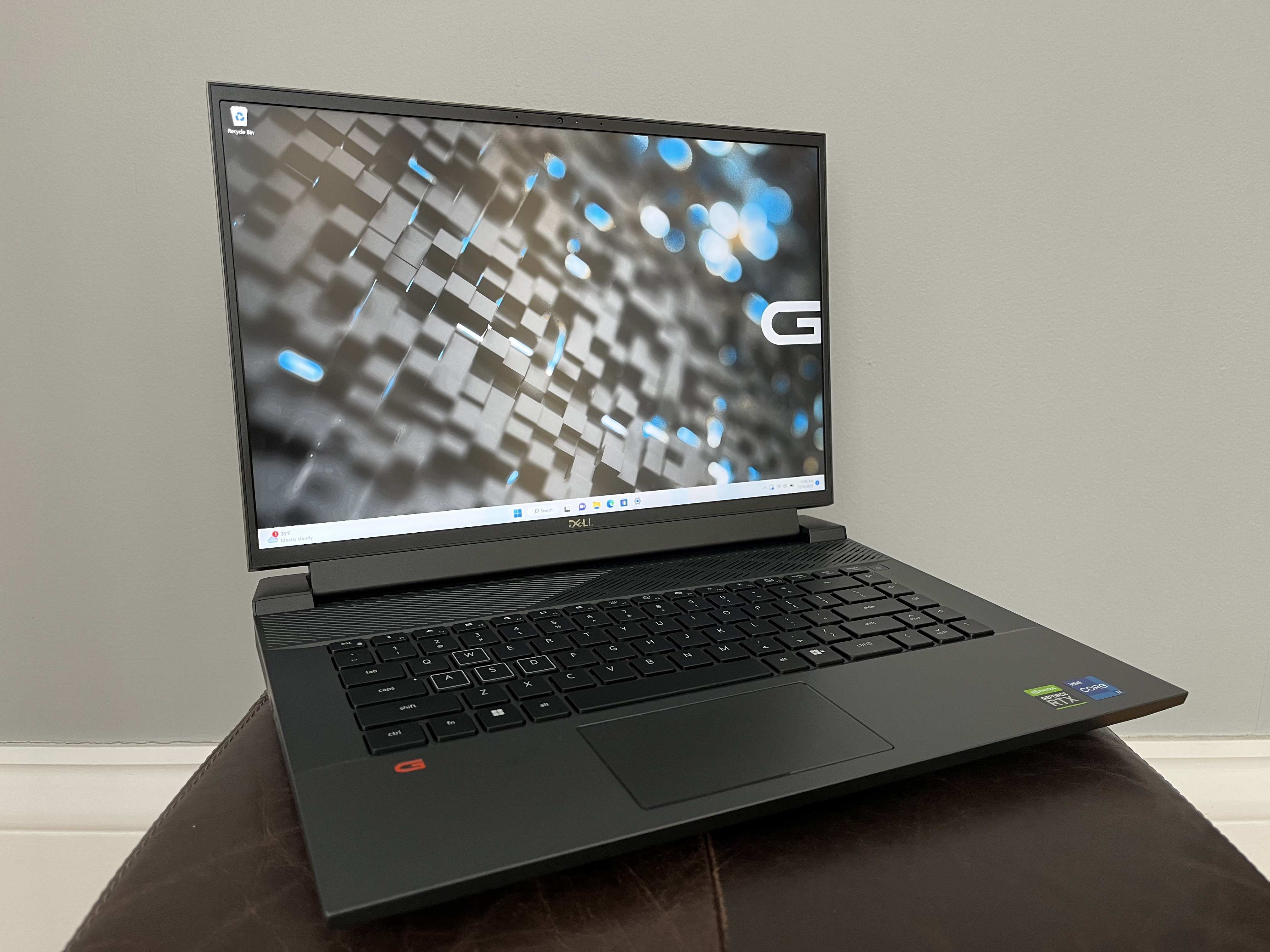
Pros
- Strong performance for the price
- Versatile and bright 16-inch 16:10 QHD display
- Thunderbolt 4 on board
Cons
- Bulky, boring design
- Mushy keyboard, tiny touchpad
- Grainy 720p webcam
- Lots of fan noise
Price When Reviewed: $1,499.99
If you’re able to stretch your budget, the Dell G16 is a fantastic laptop for work or play. It crushed the competition in the processor department. That means it has plenty of power for everyday tasks like office productivity, video chatting, checking e-mail, and more. This laptop also turned in 131 FPS while running the Rise of the Tomb Raider benchmark. For hardware, it features an Intel Core i7-12700H CPU, an Nvidia GeForce RTX 3060 GPU, 16GB of RAM, and 512GB of PCIe NVMe SSD storage. The G16 isn’t the most attractive laptop we’ve ever reviewed, but it gets the basics right and that’s what really matters. If you’re on the hunt for a laptop that you can work and play on, there’s no better option than the G16.
Read our full Dell G16 review
How we tested
The PCWorld team puts each and every Windows laptop through a series of benchmarks that test GPU and CPU performance, battery life, and so on. The idea is to push the laptop to its limits and then compare it against others we’ve tested. Below, you’ll find a breakdown of each test and the reasons why we run them.
Windows laptops
- PCMark 10: PCMark 10 is how we determine how well the laptop handles lighter tasks like web browsing, word processing, spreadsheets, and so on.
- HandBrake: HandBrake is more intensive than PCMark 10. It basically measures how long a laptop’s CPU takes to encode a hefty 30GB file.
- Cinebench: Cinebench is a brief stress test of the CPU cores. It does this by rendering a 2D scene over a short period of time.
- 3DMark: 3DMark checks if 3D performance remains consistent over time by running graphic-intensive clips.
- Gaming tests: We benchmark each gaming laptop using several titles.
- Video rundown test: To gauge battery life, we loop a 4K video using Windows 10’s Movies & TV app until the laptop dies.
What you should look for in a budget gaming laptop
When it comes to picking the right gaming laptop, it really depends on what you want to do with it. Do you plan on playing lightweight indie titles like Stardew Valley (no shade, I love this game) or something more visually demanding like Cyberpunk 2077? Are you going to use the machine for work as well as play? It’s possible to get reliable performance out of a gaming laptop that costs under a grand, but you’ll need to take a hard look at the individual components. You don’t need a powerful GPU for something like Fortnite. You can run even most of the newest games very well at 1080p resolution with even entry level graphics cards if you don’t mind dialing down the in-game visual settings from Ultra to more-reasonable High to Medium settings. You’ll almost certainly need to do so to hit 60 frames per second in modern games on a gaming laptop under $1,000, but the good news is they should still look good, especially on a laptop display.
- GPU: The thing about the GPU is that it can’t be swapped out and upgraded later, so you need to be real choosy about which one you pick, as this component will determine how well your machine runs games. Luckily, you don’t need the best of the best to get reliable gaming performance. The GTX 1650 is an entry-level GPU that’s affordable and good enough for 1080p gaming with mid-to-high graphics settings. That said, expect lower frame rates on newer titles. If you’re looking for a bit more power, the more modern RTX 3050 and 3050 Ti are preferred options, and commonly found in gaming laptops under $1,000. You may occasionally find a deal on an RTX 3060-powered laptop under $1,000, but they’re relatively rare.
- CPU: Like the GPU, the processor can’t be upgraded either, so you’ll want to be selective. For Intel, we’d recommend an 11th-gen Intel Core i5 or i7. For AMD, you’ll want to spring for a Ryzen 4000 or 5000. A processor with at least four cores is good, but six cores or more is better.
- RAM: You’ll want at least 8GB of RAM. If you can afford 16GB of RAM, go for it. Memory is normally upgradable, so you can always swap it out and add more later on.
- Storage: Storage impacts how many games and applications you can install on your laptop. Like RAM, storage is often upgradable and can be swapped out later. However, you should aim for at least 512GB of SSD storage plus a hard drive, as AAA titles tend to eat up a lot of space. SSDs load games faster, as data is stored on chips rather than spinning disks.
- Display: 1080p is what you can expect at this price range, either with a 60Hz or 144Hz (preferred) refresh rate. Budget gaming laptops don’t always have the best displays, as that’s where manufacturers tend to cut corners to keep the cost low. If you’ve got a dim display, you can always pick up an external monitor to plug into it.
- Battery life: Generally speaking, gaming laptops are known for having poor battery life. That’s because they use a ton of power. They also tend to be heavier than other laptops because they need more space for heatsinks and other cooling components. Depending on the use, most will last anywhere from four to six hours on a single charge. That said, there are a few exceptions. The HP Envy 14 (featured above), for example, hit the 15 hour mark during our battery test.
FAQ
Are Chromebooks good gaming laptops?
This will depend on the type of gaming you want to do. But frankly, no they don’t make good gaming laptops in a general sense. Chromebooks can handle web games and Android games just fine. But a Chromebook won’t cut it if you’re looking to play the latest high-powered AAA games. This comes down to two factors, they don’t run Windows and they likely don’t have sufficient graphics power.
With that said, Google is trying to bring cloud gaming to Chromebooks and it will likely be available in the future. Cloud gaming services use a remote PC or console to play games streamed through the cloud onto the Chromebook. Until that service is up and running though, Chromebooks will not be able to compete in the gaming arena.
Can you game with integrated graphics?
Nowadays, the latest processors with integrated graphics can run a faire amount of modern PC games at reasonable settings. Intel’s newer Iris Xe line of processors with integrated graphics, for example, have been shown to run some of the latest games at 1080p and 30fps. You should know though that not all integrated graphics are capable of the same things.
Intel and AMD’s integrated graphics have made huge leaps in recent years with regard to gaming performance. If you’re on a budget or looking for an ultra thin laptop with integrated graphics you can still enjoy some light gaming as well. Check out our article about Intel’s Core 12th-gen Iris Xe and AMD’s brand new Ryzen 6000 RDNA 2 for more detailed info.
What size laptop is best?
This will come down to personal preference and intended use. If you plan to travel a lot with your laptop, then a small ultraportable size in the neighborhood of 13 to 14 inches is best. However, if want to use it as a gaming machine, then something in the 15- to 17-inch range would be ideal. Also, don’t forget to check the weight of the laptop before you buy it. Ultra thin laptops can weigh a featherlight 2 pounds while beefy gaming computers top the scales at three or four times that.
- SEO Powered Content & PR Distribution. Get Amplified Today.
- EVM Finance. Unified Interface for Decentralized Finance. Access Here.
- Quantum Media Group. IR/PR Amplified. Access Here.
- PlatoAiStream. Web3 Data Intelligence. Knowledge Amplified. Access Here.
- Source: https://www.pcworld.com/article/630093/best-gaming-laptops-under-1000.html
- 000
- 10
- 1000
- 11
- 13
- 14
- 15
- 16
- 2D
- 30
- 39
- 3d
- 4k
- 4K video
- 5000
- 60
- 7
- 8
- a
- AAA
- able
- About
- above
- acer
- Acer Nitro
- Acer Nitro 5
- across
- add
- added
- adding
- Additionally
- ADvantage
- affordable
- Against
- aim
- All
- also
- alternatives
- always
- amazing
- AMD
- amount
- an
- and
- android
- android games
- any
- app
- applications
- ARE
- Arena
- article
- as
- Asus
- At
- attractive
- available
- back
- Basics
- battery
- BE
- because
- been
- before
- being
- below
- Benchmark
- benchmarks
- BEST
- Better
- between
- Bit
- Blink
- board
- Boost
- brand
- Brand New
- Breakdown
- Bright
- bring
- budget
- build
- but
- buy
- by
- CAN
- capable
- card
- Cards
- case
- Cash
- certainly
- Certification
- charge
- chassis
- Chatting
- checking
- Checks
- Chips
- chromebook
- Chromebooks
- Cloud
- Cloud Gaming
- come
- comes
- compete
- competition
- competitors
- component
- components
- computers
- Connectivity
- Consider
- consideration
- considering
- consistent
- Console
- continuous
- contrast
- Core
- corners
- cost
- Costs
- could
- course
- CPU
- CRISP
- currently
- Cut
- data
- day
- deal
- Dell
- demanding
- department
- depending
- depends
- Design
- detailed
- determine
- Devices
- difficult
- disappointing
- do
- does
- double
- down
- drain
- drive
- due
- During
- each
- eat
- edition
- either
- eleven
- enjoy
- enough
- Enter
- enthusiasts
- entry
- especially
- even
- EVER
- Every
- everyday
- Example
- expect
- expensive
- experience
- expertly
- External
- extremely
- eye
- Face
- Factors
- fan
- FAQ
- faster
- Feature
- featured
- Features
- fee
- feel
- few
- find
- fine
- fingerprint
- fluctuate
- For
- Former
- four
- FPS
- Frame
- from
- full
- further
- future
- game
- Gamers
- Games
- Gaming
- Gaming Laptop
- General
- generally
- Get
- gives
- go
- going
- good
- GPU
- grade
- graphics
- great
- handle
- Handles
- Hard
- Hard Drive
- Hardware
- has
- Have
- having
- help
- here
- High
- HIT
- hour
- hours
- How
- however
- HP
- HTML
- HTTPS
- huge
- hunt
- i
- idea
- if
- Impacts
- important
- in
- in-game
- inches
- Indie
- individual
- info
- install
- instead
- integrated
- Intel
- intended
- Internet
- into
- Is
- IT
- ITS
- jpg
- just
- keep
- Keyboard
- keys
- know
- known
- laptop
- laptops
- large
- last
- later
- latest
- LEARN
- least
- left
- lenovo
- less
- Level
- Life
- light
- like
- likely
- limits
- Line
- List
- Little
- lives
- load
- Long
- Look
- looking
- lot
- love
- Low
- machine
- made
- make
- MAKES
- manufacturers
- many
- mark
- massive
- Matters
- May
- means
- measures
- medium
- memory
- microphone
- might
- Military
- mind
- model
- Modern
- money
- Monitor
- Monthly
- more
- most
- Movies
- much
- need
- New
- Newest
- news
- no
- Noise
- normally
- not
- now
- nvidia
- of
- Offers
- Office
- often
- Oled
- on
- One
- only
- Option
- Options
- or
- order
- Other
- Others
- our
- out
- outstanding
- over
- overall
- pack
- Packed
- Pay
- PC
- pc games
- PC Gaming
- performance
- period
- personal
- pick
- picking
- plan
- plato
- plato data intelligence
- platodata
- platogaming
- play
- Playing
- Plenty
- plug
- Plus
- poor
- possible
- pounds
- power
- powerful
- Premium
- pretty
- price
- prices
- Pro
- probably
- processing
- processor
- productivity
- purchase
- push
- putting
- quality
- quest
- RAM
- range
- Rare
- rate
- Rates
- rather
- ratio
- reach
- read
- Real
- really
- reasons
- recent
- recommend
- recommendations
- reduce
- regard
- relatively
- reliable
- remains
- remote
- Rent
- replacement
- resolution
- REST
- result
- review
- right
- robust
- roundup
- Run
- running
- RX
- Said
- same
- satisfying
- save
- scales
- scene
- scratch
- second
- see
- seen
- selection
- sense
- Series
- Service
- Services
- several
- Shade
- Short
- should
- shown
- significantly
- single
- SIX
- Size
- small
- smooth
- So
- some
- something
- Space
- speakers
- Speaking
- spend
- spinning
- Sport
- Spot
- spring
- SSD
- stand
- still
- stock
- storage
- stored
- straight
- stream
- stress
- strong
- sturdy
- successful
- such
- sufficient
- swap
- sweet
- Take
- takes
- Team
- test
- tested
- Testing
- tests
- than
- that
- The
- The Basics
- The Future
- their
- Them
- then
- there
- These
- they
- thing
- things
- think
- this
- those
- though
- three
- Through
- time
- times
- Title
- titles
- to
- Ton
- top
- travel
- TUF
- turned
- tv
- two
- type
- Ultra
- under
- until
- up
- updated
- upgraded
- us
- US military
- use
- using
- versatile
- very
- Video
- visuals
- want
- we
- web
- weigh
- well
- were
- What
- when
- where
- while
- WHO
- why
- will
- willing
- windows
- wireless
- with
- without
- Work
- worth
- would
- years
- you
- your
- zephyrnet
